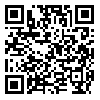BibTeX | RIS | EndNote | Medlars | ProCite | Reference Manager | RefWorks
Send citation to:
URL: http://tbj.ssu.ac.ir/article-1-2339-en.html

 , B Hajimohammadi
, B Hajimohammadi 
 , A Amiri *
, A Amiri * 
 , AM Ranjbar
, AM Ranjbar 
 , H Mozaffari khosravi
, H Mozaffari khosravi 
 , H Fallah zadeh
, H Fallah zadeh 
 , AR Vahidi
, AR Vahidi 
 , A Dehghan Banadkoki
, A Dehghan Banadkoki 

Abstract
Introduction: Iran is the richest country in terms of distribution of medicinal plants. The antimicrobial effect of plant extracts and essential oils is well known and they are used as a good substitute in food industry to control food-borne pathogens. Due to the antibacterial activity of plant extracts and their efficacy against microorganisms, the aim of this study was to investigate the antibacterial activity of peppermint extract in order to control pathogenic bacteria.
Methods: Piperita L., which is one of the species of mint; was used in this invitro-experimental study. The extraction was performed by percolation method. Well - agar method was used for antibacterial effects of extracts. The minimum inhibitory concentration (MIC) and minimal bactericidal concentration (MBC) were done for six standard bacteria using microdilution method. The test was performed 3 times for each bacterium. Data were analyzed by using SPSS version 16 and t-test.
Results: The lowest MIC of peppermint extract on examined microorganisms were observed for Staphylococcus aureus and Enterococcus faecalis (3.25 mg/ ml). Also the maximum diameter of inhibition zone, was related to Staphylococcus aureus (32 mm).
Conclusion: Results of this study indicated that peppermint extract has a favorable control effect on the growth of food borne pathogens, which can be used as a perfect preservative for keeping food.
Received: 2015/06/7 | Accepted: 2015/07/1 | Published: 2016/11/15
| Rights and permissions | |
 |
This work is licensed under a Creative Commons Attribution-NonCommercial 4.0 International License. |



